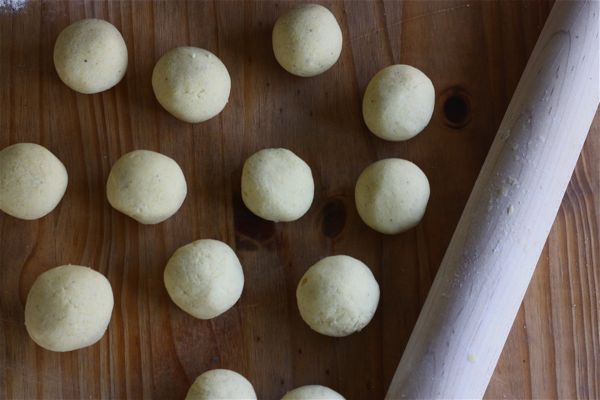
Do you spin? Do you go to spinning class?
Today is the first day I’m attending a spin class in four years. Four years!! Four years ago a spinning class scarred me…literally.
It all started when I was trying to lose 5 pounds, which I feel is the sentence that gets me in the most trouble…
My friend invited me to join her take a class at her fancy gym. You know, those LA gyms that sorta feel like a club, where girls are just wearing sports bras, and dudes are super muscle-y and stare at themselves in the mirror as they work out. Gross. Yeah, one of those gyms…

First of all, what they don’t tell you is that you need the right shoes. Shoes and spinning go hand in hand. You need those I’m-on-a-stationary-bicycle-shoes that clip in. You know what I’m talking about? The shoe situation was the root of my problem that evening.
Okay, so I entered the class. The room was dimly lit, just black light. Techno music was thumping. Everyone was half-naked. You know, just the usual gym class.
The dude that was conducting the class was wearing one of those Madonna-head-piece-microphones. He liked Madonna a lot, I think.
So we started…spinning. First it was like the warm-up, a lot “up-hill,” with inspirational talk about reaching the mountain or something. I dunno. This is another topic of conversation, but don’t get all cheesy on me as I’m sweating. I don’t want to be preached to about life, or whatever, at a spin class, OK?!

Then it really started. We went faster…and faster…and fast.
As I looked around the room, nothing but skinny, model-y girls totally killing it. Like, they do this all the time, clearly. So there I was, spinning as fast as I could, trying to keep up. And guess what? I was keeping up.
I was killing it–I was totally proud of myself.
This is a good time to mention that there are apparently brakes on stationary bicycles? I did not know this. Nope. Didn’t know.

So, there I am, spinning away…super fast. Like a pro, really feeling legit, like I belonged. And then…omg…and then…my not-spinning-shoes slipped out of the shoe socket and the momentum lunged me forward, throwing my body practically over the bicycle handlebars.
People stared. Actually, everyone stared. And then the music lowered and I hear over the loudspeaker, “Everyone keep going. She’s fine.” The instructor was talking about me, if you didn’t know. ME!!
He jumped off of his bicycle, ran to my aid and mouthed, “ARE-YOU-OKAY?” Totally mortified, I nodded like a lot. I was fine. It was cool. Stop staring, everyone. Thanks. Come again.
But I wasn’t fine. My leg hurt really really really bad, but I was too shy to get up and leave. My leg had hit the water bottle holder and a piece of plastic sliced my thigh open. “Sliced” might be a tad bit of a dramatic word–but it hurt and there was blood and I was hurting, OK? But I couldn’t see my leg because it was dark in there and I guess blood doesn’t glow in the dark under a black light.
When I left class I looked down and was whoa. This might be the most embarrassing thing to ever happen to me. I fell off of a bike THAT WASN’T MOVING! And now I’m bleeding…from a stationary bicycle.
This is basically the gym version of hitting a parked car. Which I have also done, actually, but I’ll save that for next time…

Let’s talk empanadas. Specifically, Colombian empanadas.
I was totally inspired to make these when I saw
Kelsey and
Nicole make their versions of Argentinian empanadas.
Basically, Colombian empanadas are made with a corn-based dough and fried; versus Argentinian (and Cuban, Puerto Rican, etc.) empanadas which are made from a traditional pastry dough and baked.
The dough is drastically different; the filling nearly the same. The filling is called “picadillo.” And about every country in South America has their own way of making it. Some put olives, hard boiled egg, raisins, fried cubed potatoes…the list could go on…
This is a combination of ground beef, some spices, tomato, aromatics and mashed potato. I love the filling so much that I like to eat it with just rice. Delicious.
The dough isn’t hard. It’s just Masa flour (a.k.a. corn flour) mixed with water, a little olive oil and salt. You divide the dough into balls and roll it out in between two pieces of plastic wrap.
Fill the empanadas, crimp the edges and fry. Not going to lie, the process is a little time consuming, but definitely not hard. And very worth it.
Let’s hope I don’t fall of the bike today. If I do I know what I’m making again…
 Colombian Empanadas
Colombian Empanadas
Print this recipe!
Dough:
2 3/4 cups yellow corn flour, 2 tablespoons
3 cups warm water
1/2 tablespoons olive oil
1/2 teaspoon kosher salt
Filling:
1 medium russett potato, peeled and diced
Olive Oil
1/4 yellow onion, diced
1/4 red bell pepper, diced
2 garlic cloves, minced
2 1/2 tablespoons tomato paste
1/2 teaspoon ground cumin
1/4 teaspoon ground paprika
1/4 teaspoons crushed red pepper
12 ounces ground sirloin, lean
1 teaspoon kosher salt
1. In a medium bowl, add corn flour, warm water, olive oil and salt. Mix until dough forms a ball. If dough is still wet, add a tablespoon of corn flour at a time until the mixture comes together. Wrap with plastic wrap and allow to rest on the counter for 20 minutes.
2. Meanwhile, bring a small pot of water to a boil. Add the diced potato and cook until tender, about 5-7 minutes. When done, transfer to a colander to drain. Mash the potato lightly with a fork and set aside.
3. In a medium skillet, over medium heat, add a tablespoon of olive oil. Add onions and cook until translucent, 5-7 minutes. Add red bell pepper and cook for an additional 2 minutes. Place minced garlic atop vegetable mixture and cook for an additional minute. Add tomato paste, cumin, crushed red pepper, salt and mix.
3. To the skillet, add the ground beef, breaking it up with a wooden spoon. Cook until the meat browns, mixing it regularly, about 7 minutes. Transfer mixture to a bowl and add the mashed potato. Mix until combined and salt to taste.
4. Alright! Now it’s time to roll out the dough. Scoop 1 1/2 tablespoons of dough onto your palm and roll into a smooth ball. Place the ball in between two pieces of plastic wrap and gently press into a circle using a rolling pin. Place a heaping teaspoon or two on one half of the dough circle. Using the bottom plastic wrap, lift and fold the dough over, creating a half moon shape. Repeat process until you’ve gone through all of the dough. Using the tines of a fork, crimp the edges tightly.
5. In a cast iron skillet (or medium pot), add enough vegetable oil until it reaches about 3 inches, and heat until a thermometer reaches 350F. If you don’t have a thermometer, not that big of a deal–add a tiny bit of scraped dough and if it sizzles, it’s ready for the empanadas. Carefully add three empanadas at a time, being sure to not overcrowd the pan.
Simple lil’ salsa
3 Roma tomatoes, de-seeded
1/4 cup white onion, diced
1 serrano pepper, de-seeded and diced
2 tablespoons cilantro
2 teaspoons lime juice
1/2 teaspoon salt
1. Place all ingredients in a food processor and pulse until combined.
Yields 20 Empanadas
 http://acozykitchen.com/colombian-empanadas/
http://acozykitchen.com/colombian-empanadas/











 Here are a few recipes to try, basically all you need is one or two items, a bucket, some water and a bit of time. Allow to brew outside and voila! You have your own secret garden food that your plants will thank you for
Here are a few recipes to try, basically all you need is one or two items, a bucket, some water and a bit of time. Allow to brew outside and voila! You have your own secret garden food that your plants will thank you for 






































